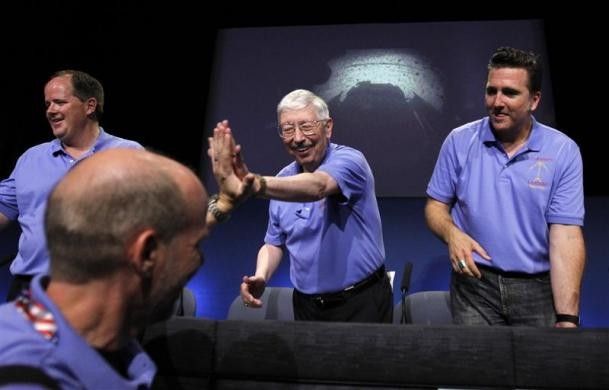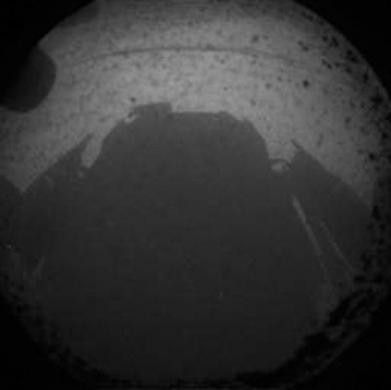NASA Scientists Hail Mars Rover Landing As 'Miracle Of Engineering' (PHOTOS)
Scanning the first images of an ancient crater that may hold clues about whether life existed on Mars, NASA scientists hailed the Mars Rover Curiosity's landing on the Red Planet on Aug. 5 as a "miracle of engineering," Reuters reported.
"When you see a picture of the surface of the planet with the spacecraft on it, that is the miracle of engineering," Lead Scientist John Grotzinger, explained to reporters Monday.
Expressing their delight over the rare feat, NASA engineers said the landing stands as the most challenging and elaborate achievement in the history of robotic spaceflight and heralds a new era in planetary exploration.
The six-wheeled, one-ton mobile science laboratory made a risky landing Sunday, providing relief and joy to the NASA scientists and engineers who worked on this astrobiology mission for many years. It was the first such mission since the Viking probes of the 1970s.
"We trained ourselves for eight years to think the worst all the time. You can never turn that off," Lead Engineer Miguel San Martin told Reuters.
Millions the world over witnessed the mission control engineers at the Jet Propulsion Laboratory in Los Angeles cry tears of joy when Curiosity made a safe landing on the Martian surface.
The Curiosity landing brings relief and success, apart from being a milestone for NASA, which has been besieged by budget cuts and the recent cancellation of the 30-year space shuttle program, Reuters reported.
Among its first tasks, the Curiosity is likely to commence chemical analysis of the soil near its landing site.
"We're on gravel plain of Mars, a somewhat familiar scene," Grotzinger remarked, adding that the gravel seemed to be quite uniform in size. "We're a complex spacecraft, and simple geology is a good thing to start off with," Grotzinger told Reuters.
Scientists are also eager to study rock and pebble formations that may have been transported by running water to a fan-shaped region near the landing site, the Reuters added.
Check out the pictures:














© Copyright IBTimes 2024. All rights reserved.











